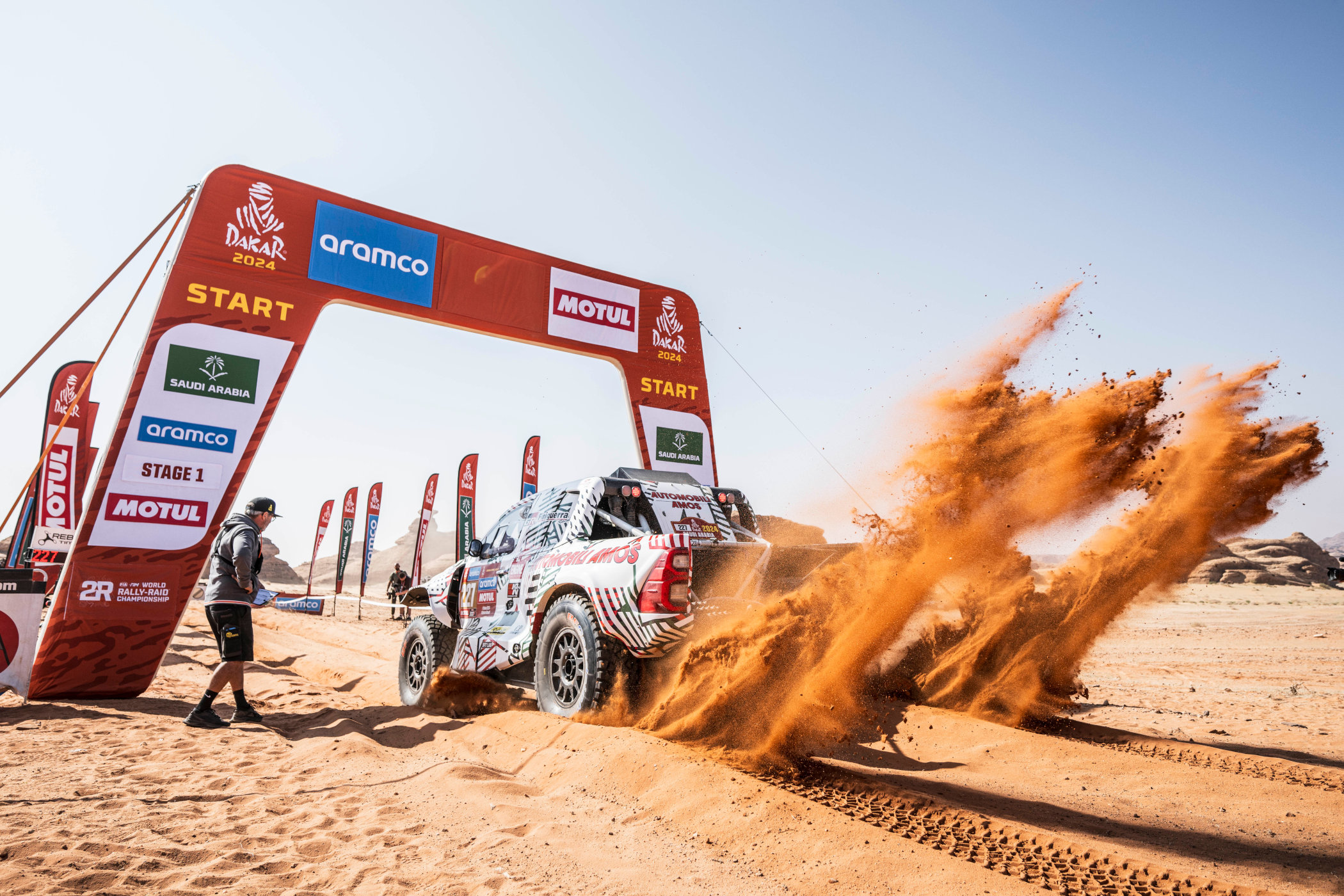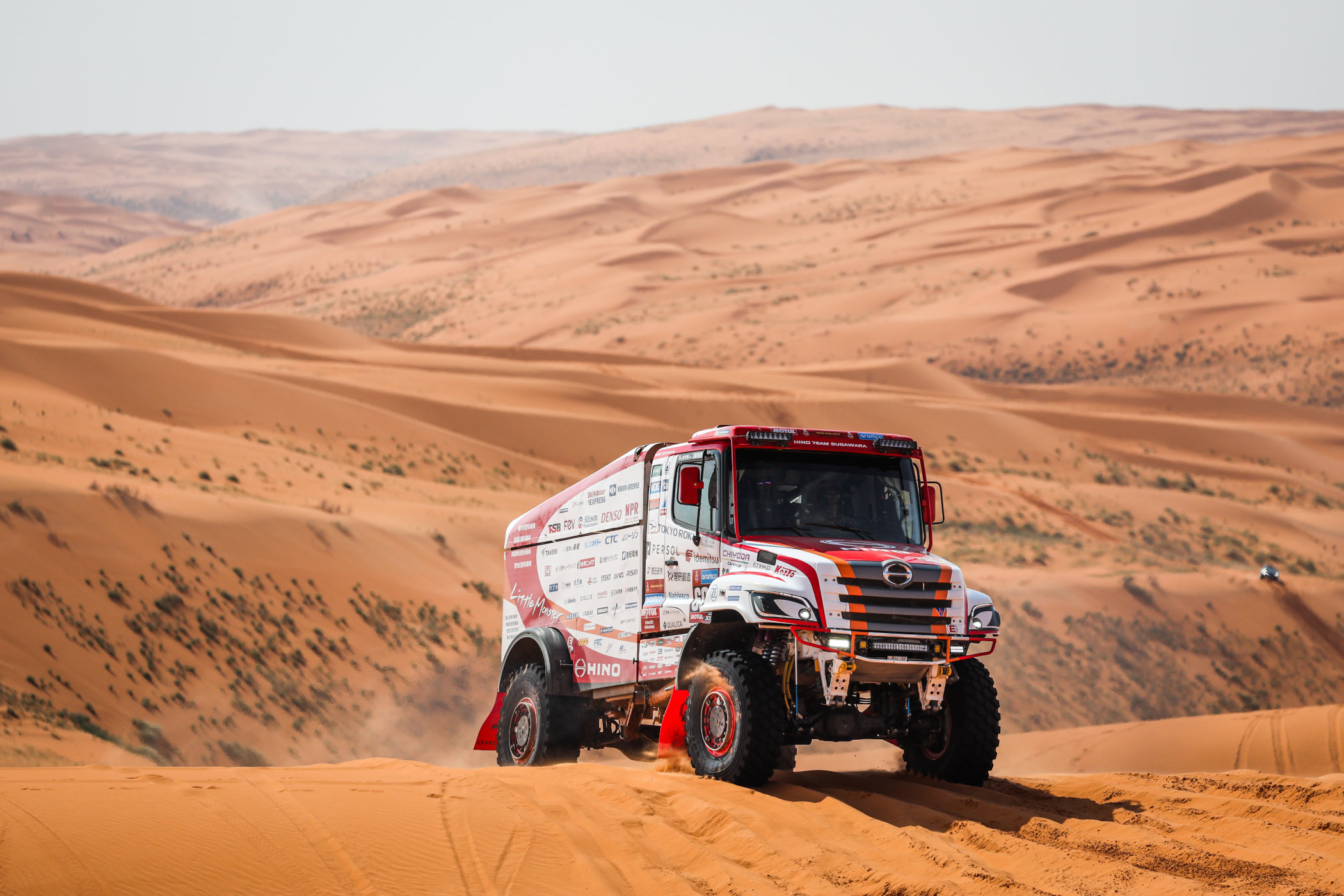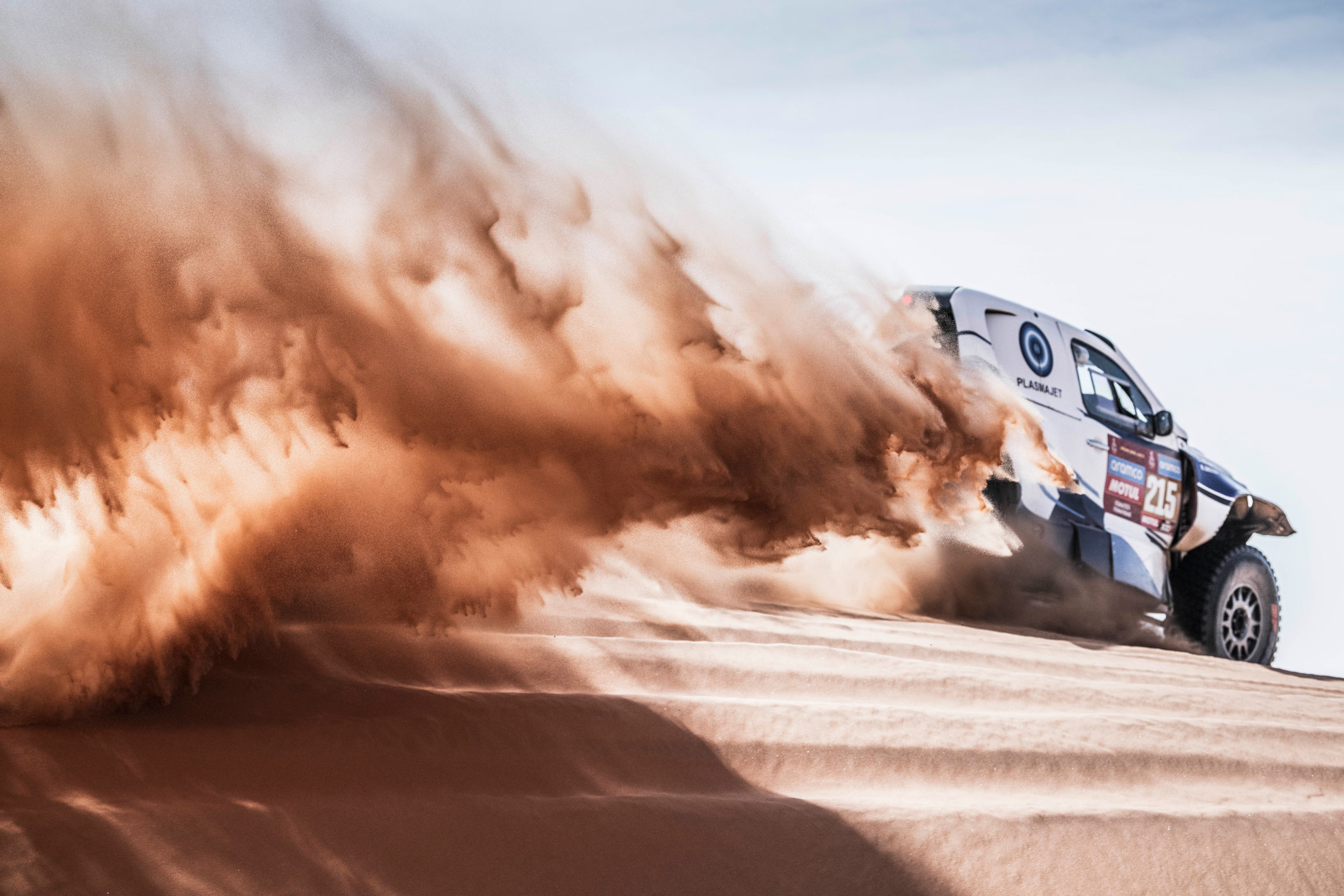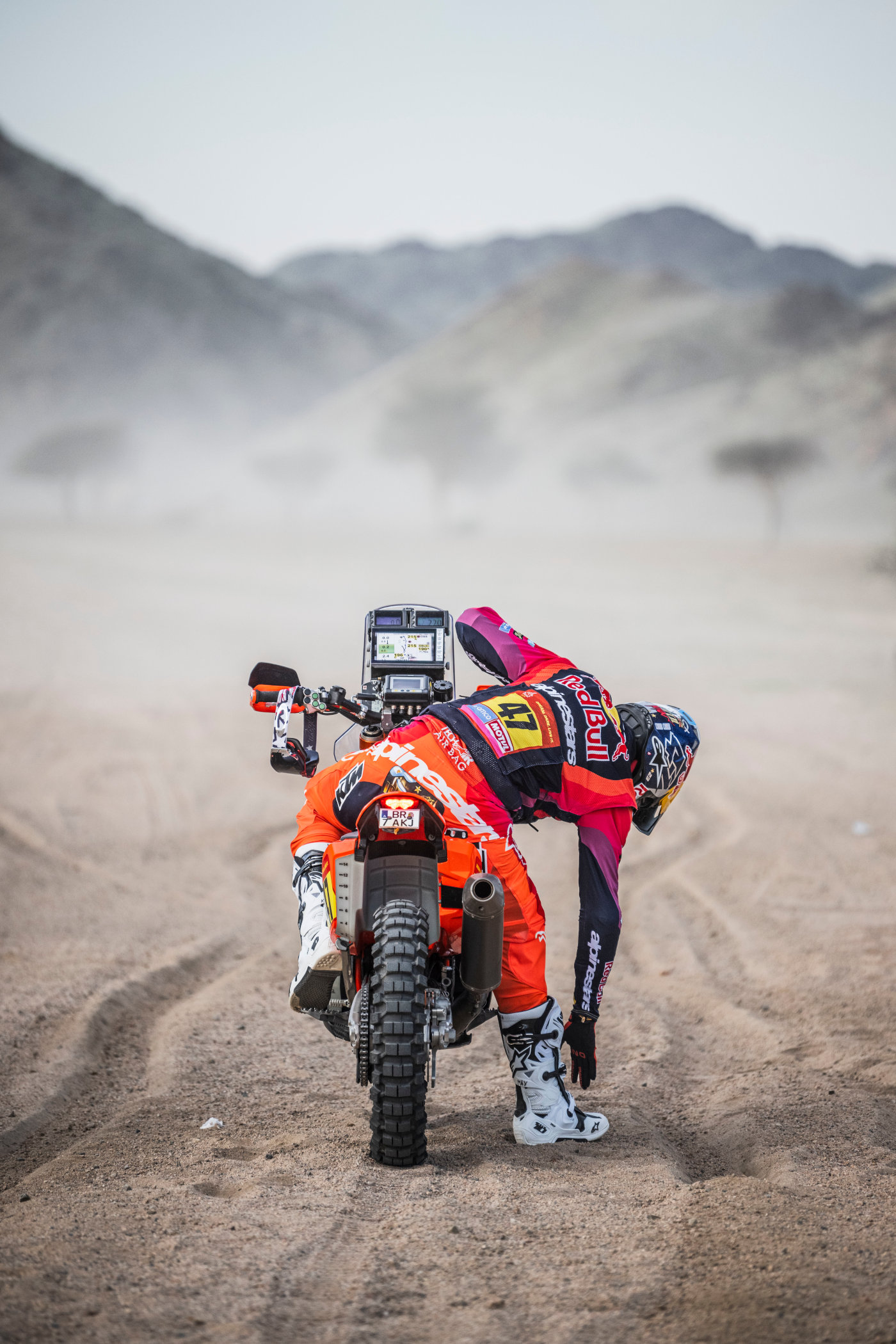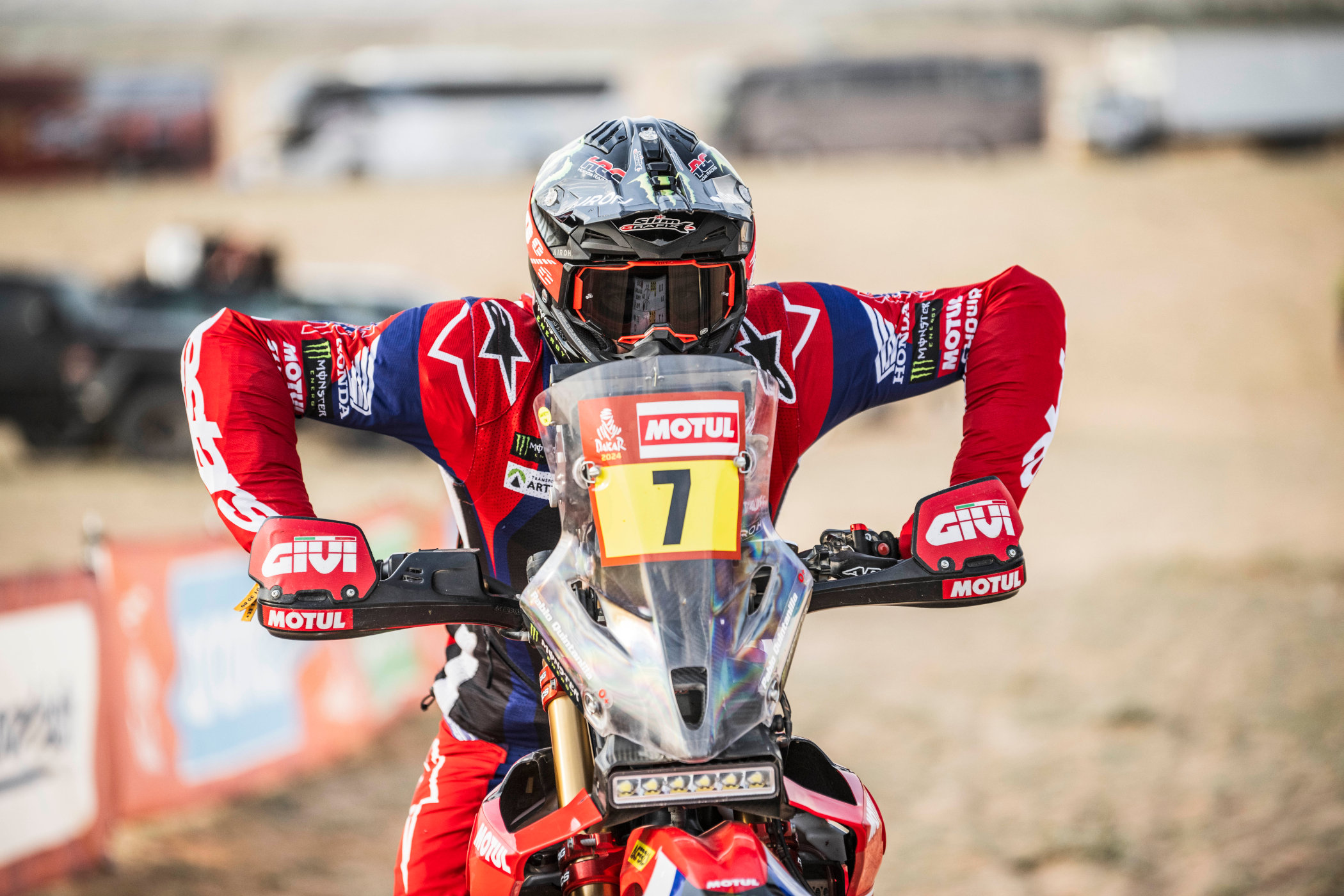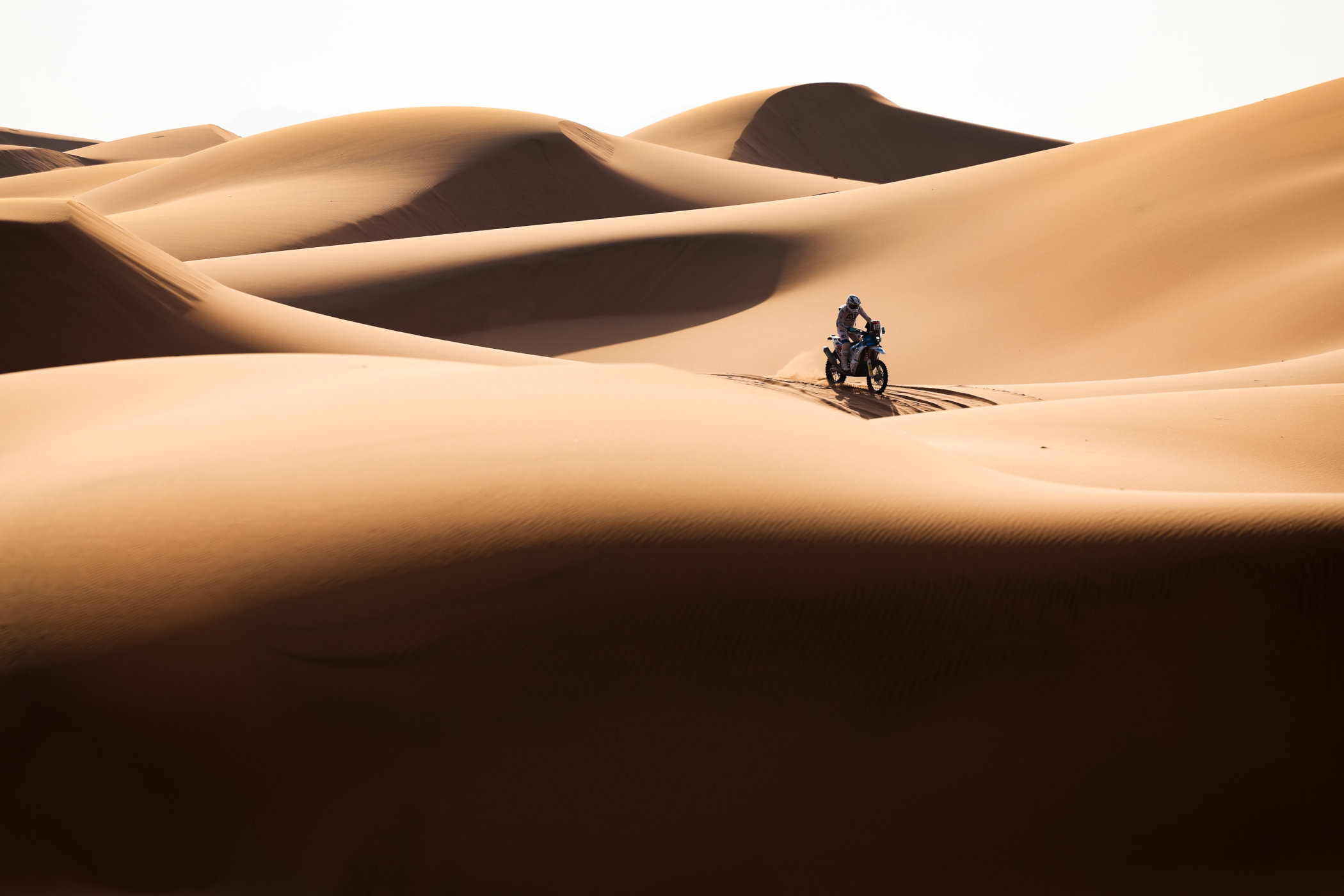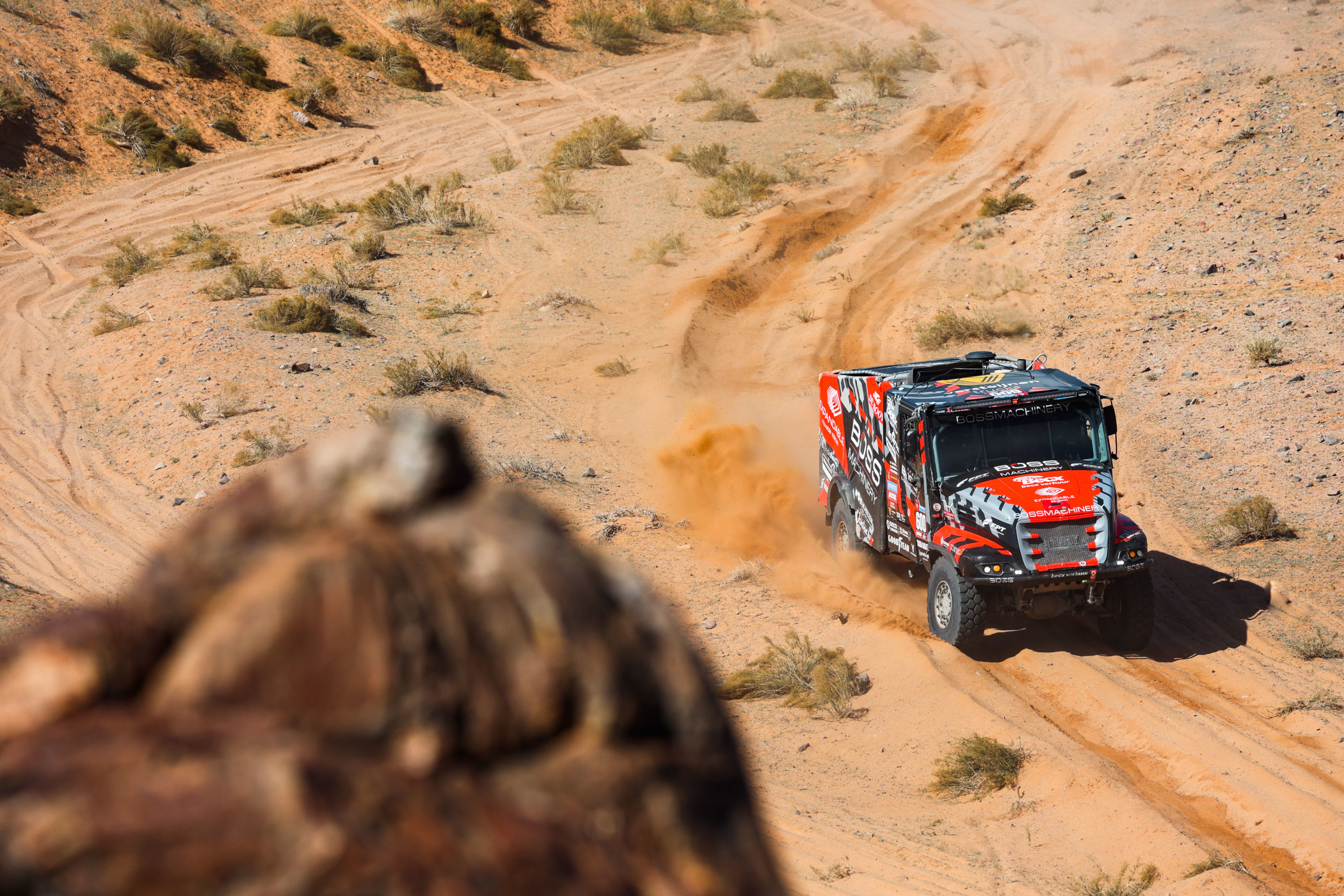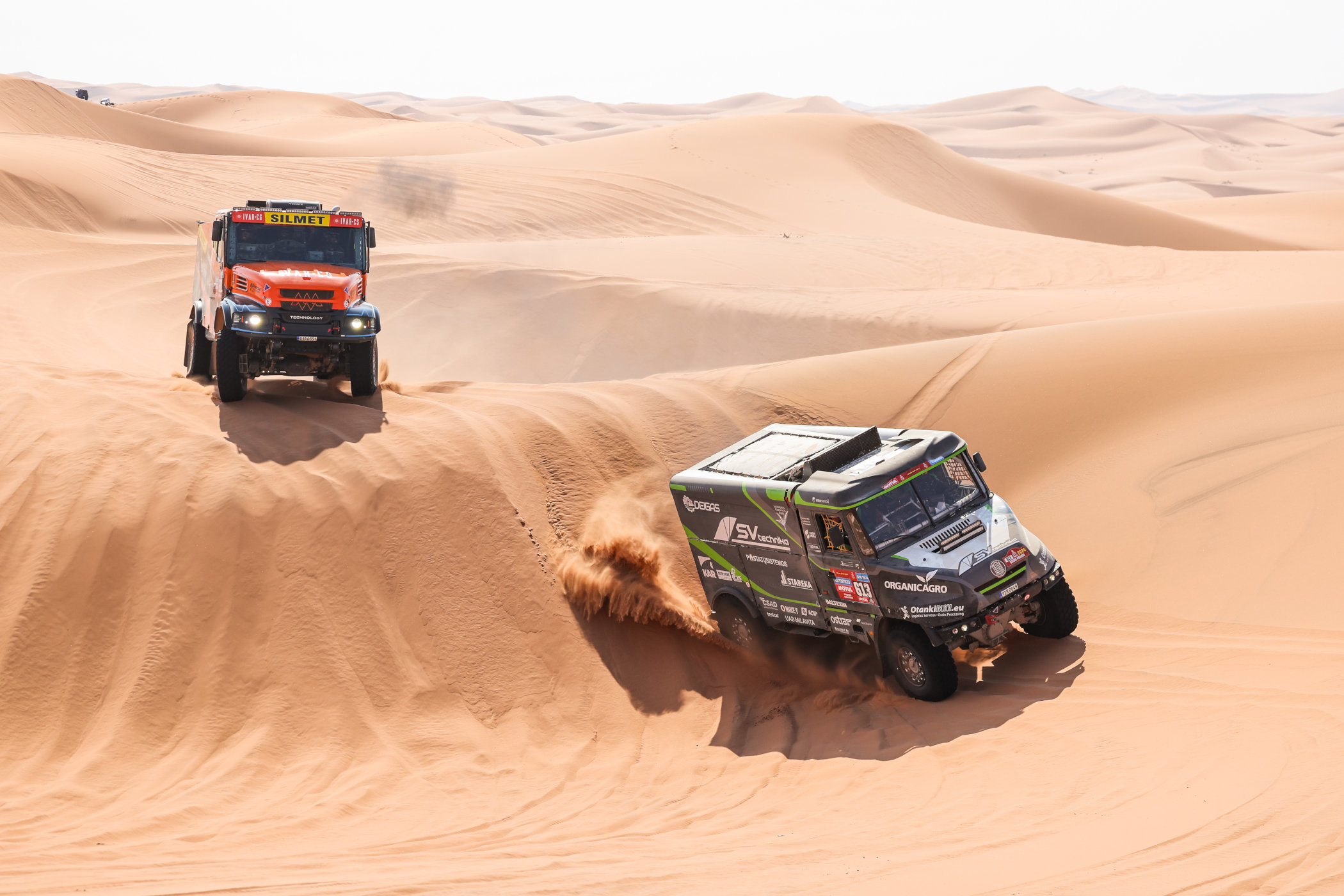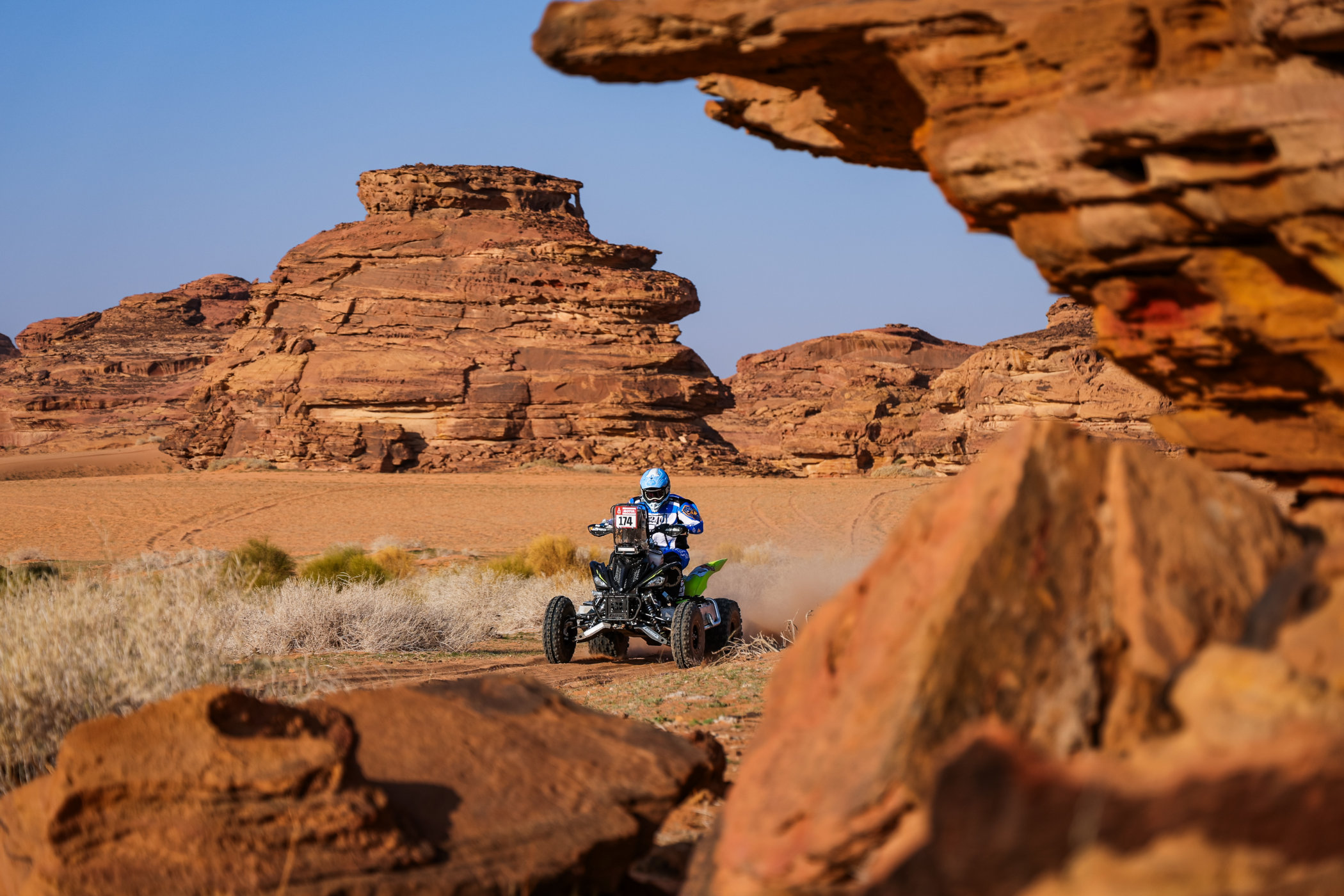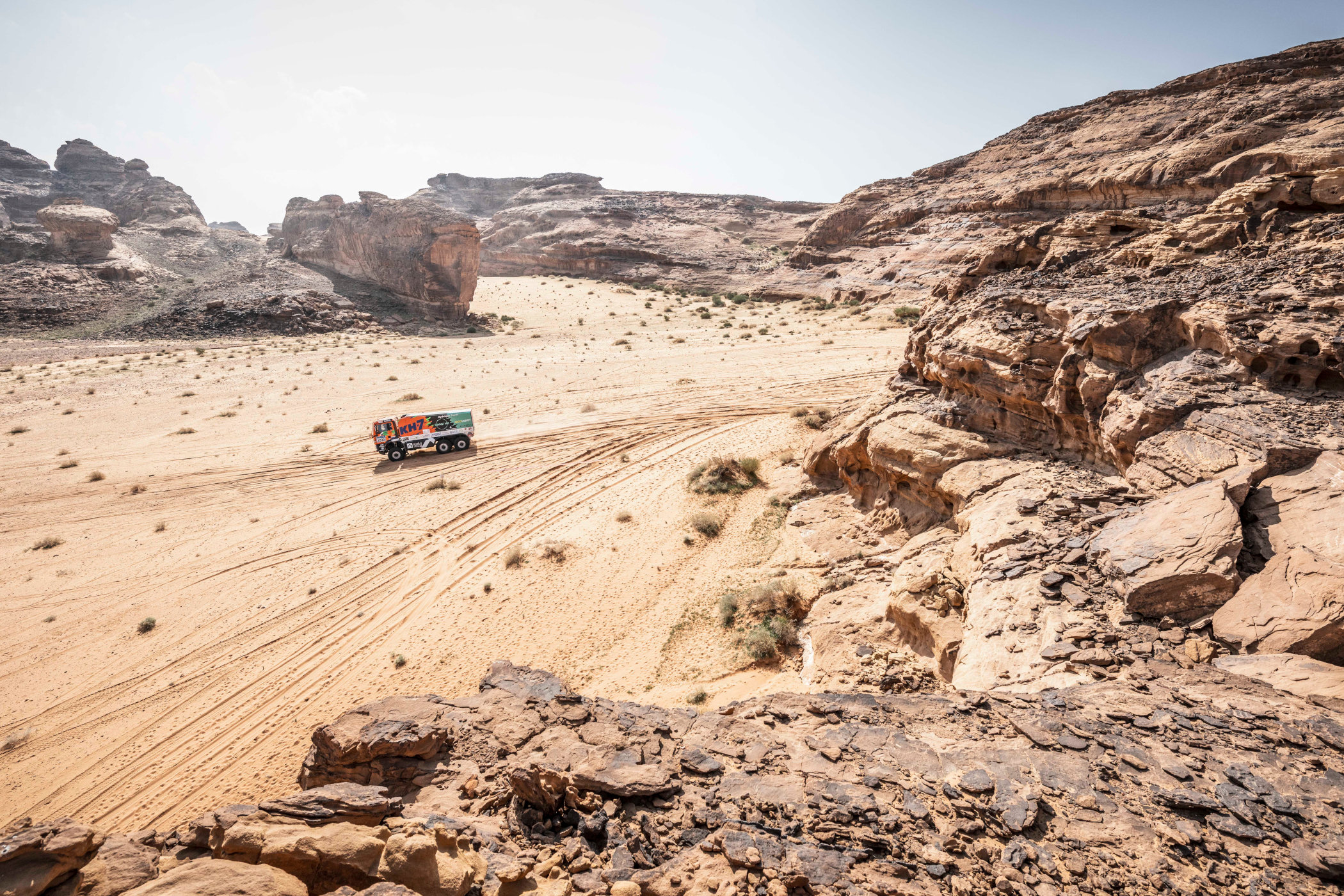Audi Defies the Odds and Wins the 2024 Edition of the Dakar Rally
After three years of blood, sweat and tears, the German manufacturer has finally conquered the Saudi desert and claims victory.
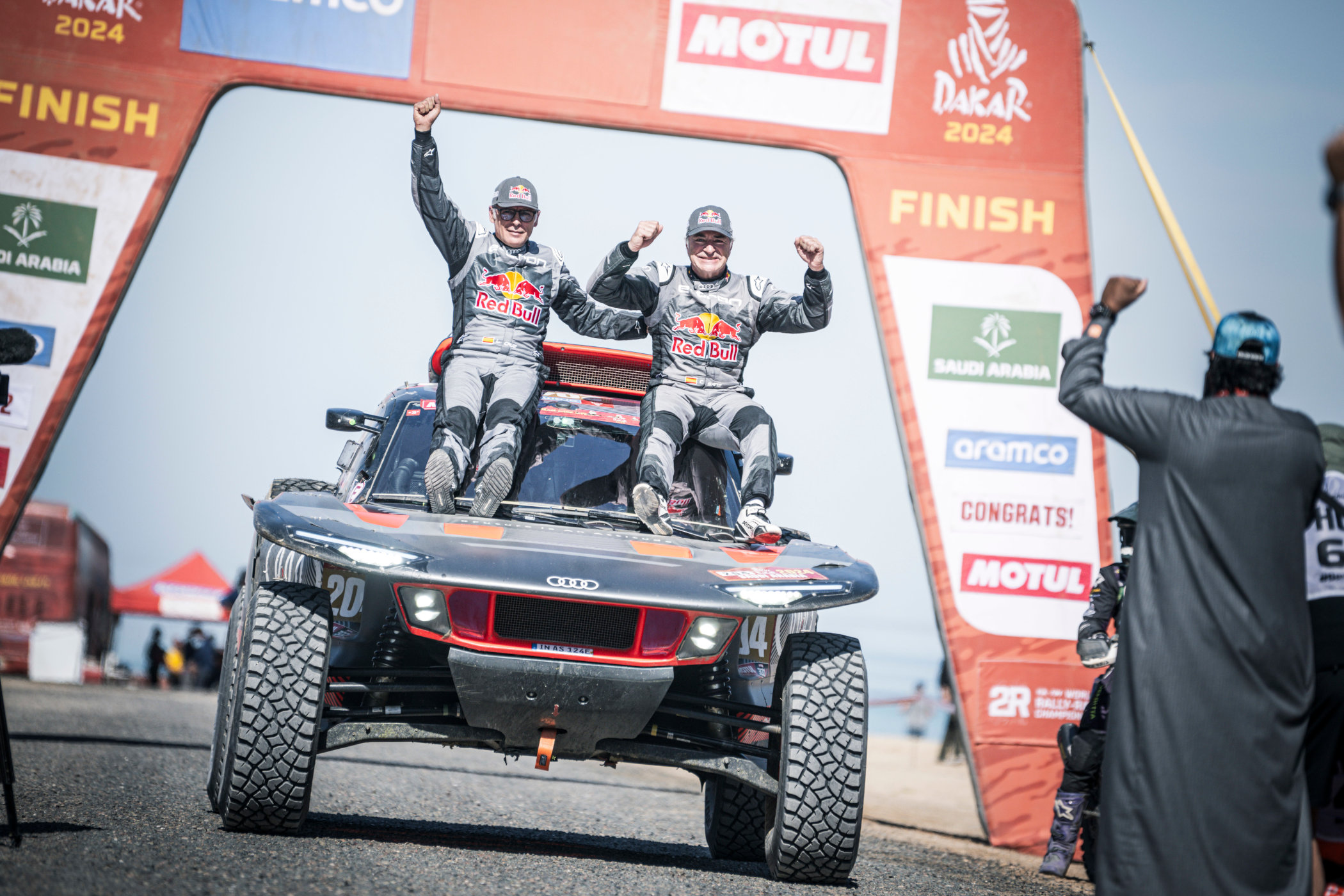
Few things are certain in life, but one thing that seems as regular as ever is the fact we get to experience the legendary Dakar Rally early in the year, every year. With the 2024 edition just under wraps, we once again got to witness the greatest and most daring drivers, navigators and crews combat the harshest terrains imaginable with bikes, quads, side-by-sides, cars or trucks. With several usual suspects battling it out with very talented newcomers, this year’s edition was one to remember. In its third attempt, Audi has finally managed to beat the odds and bring home the RS Q E-Tron E2 in first place overall, despite driver Carlos Sainz and navigator Lucas Cruz not winning a single stage!
This year’s edition of the Dakar started on January 6th, when 345 entrants set off from Al-‘Ula to battle the Saudi dunes and mountains for a prologue and 12 stages covering almost 8,000 gruelling kilometres, in an attempt to reach the finish line in Yanbu on January 19th. And when I say attempt, that’s very literal, as just 232 entrants actually made it! It is, after all, one the toughest rally challenges ever conceived, and this one once again proved it beyond a shadow of a doubt.
Almost two-thirds of the route was completely new, and the race included a 48-hour marathon stage where teams had to cover 626 timed kilometres with a midnight halt and no technical support from service crews allowed. As ever, the images coming from Saudi Arabia are incredibly powerful, and sadly not always easy to watch. This year proved fatal again, unfortunately, as Spanish motorcyclist Carles Falcón suffered a heavy crash in Stage 2, later passing away from his injuries in the hospital. The first stage also saw a severe incident happening, as French driver Lionel Blaud came into contact with a spectator far outside one of the designated viewing areas for people to watch the Dakar. Luckily, the spectator survived, but it does go to show that the Dakar is harsh on everyone involved, even people who are there to cheer on the men and women who compete.
Sainz, master of the dunes
To finish first, you first have to finish. It’s very much a cliché but in the world of Dakar, it’s perhaps more of a reality check than in any other motorsports event. Not only do you have to find your way through thousands of kilometres of the toughest terrains on the planet, but you also have to compete against the best drives in the world to do it in the least amount of time possible. This year’s Cars class, just one of the 7 categories in total, saw legendary drives such as Sebastian Loeb, Carlos Sainz, and Stéphane Peterhansel navigate their Prodrive Hunter, Audi RS Q E-Tron E2 and Toyota Hilux Overdrive, respectively, through the desert.

Sebastian Loeb initially seemed to be the one to beat, as he consistently ended up on the podium, and won 5 stages in total. Nevertheless, mechanical problems during Stage 11 meant Loeb eventually dropped down to third overall. A broken suspension set him back more than an hour, which allowed for the very consistent Carlos Sainz to jump ahead of him and clinch victory. The fact that fellow Prodrive ace Nasser Al-Attiyah had left the rally by that time also didn’t help Loeb combat the Audi team. Sébastian Loeb completed the rally in 49 hours, 44 minutes and 30 seconds, only 9 minutes behind second-place finisher Guillaume De Mévius. Carlos Sainz, claiming his fourth Dakar win, blitzed them by quite a margin, as he did it in 48 hours, 15 minutes and 18 seconds.
Honda x Brabec
American super-talent Ricky Brabec was back on top for this year’s Dakar in the motorcycles class, following a DNF in the 2023 edition. Brabec ended the 18-time winning streak of KTM on a Honda in 2020, but the Austrian manufacturer was back on top last year and looking to repeat that in 2024. Nevertheless, Brabec and Honda prevailed, winning the bikes class just 10 minutes ahead of second-place man Ross Branch on his Hero 450 Rally, and third-place finisher Adrien van Beveren on another Honda CRF 450 Rally. KTM came in fourth and fifth, at the hands of Kevin Benavides and Toby Price, with two more KTMs, another Honda, a Husqvarna and a Gas Gas dividing the remaining places inside the top ten.

Looking at the stage-by-stage results for the Dakar Rally, it often came down to mere seconds between the top spots. Stage 10 for instance, which had 371 timed kilometres, saw Ricky Brabec stay ahead of fellow Honda driver José Ignacio Cornejo by just two seconds. Consistency once again proved key as, just like Carlos Sainz managed to do, Ricky Brabec was close to the winners in most of the stages and always had a top-3 spot during the entire Dakar. From Stage 6 onwards though, he secured the lead in the standings and held on to first place until the end. After more than 51 and a half hours, the first, second and third-place finishers came across the finish line with less than 15 minutes between them, another testament to how close this ultra-touch rally raid actually can be.
A Czech one-two in the trucks
For years, the Trucks have been the playing field of the Russian Kamaz team, but for obvious reasons, they are not competing for the second year in a row. Last year it was Dutchman Janus van Kasteren who proved fastest overall, and he was dead-set on repeating that this year. He got off to an amazing start, winning the Prologue and four out of the first five stages. The Dutch would battle it out with the Czech teams of Martin Macik and Aleš Loprais from start to finish, though, as no other nationality won a stage or even landed on the podium!

But where Janus van Kasteren had a cracking first few days, Martin Macik took home the win in stages 5, 6 and 7, with Mitchel van den Brink and Gert Huzink then winning three in a row, and Aleš Loprais clinching the final two. The gaps in the Trucks class were considerably bigger compared to the bikes and cars, with the closest gap between first and second in the overall ranking being under two minutes (following stage 3), which grew to just under two hours after the final stage. Macik took the lead in the standings after the marathon stage and never let go of it again, with some of his closest rivals suffering from mechanical issues as well. And also noteworthy is the fact that Loprais is behind the wheel of a Praga truck, the same manufacturer that is building the Praga Bohema hypercar.
Cristina Gutiérrez, queen of the dakar
The sport has always been very male-oriented but that doesn’t mean women can’t or don’t compete. On the contrary even, as for years, Jutta Kleinschmidt would be a formidable adversary in the cars class. She was the first woman to ever win a stage in the Dakar, and amazingly won overall in 2001! She is now joined by Cristina Gutiérrez Herrero, a 33-year-old Spanish rally ace. Gutiérrez already has some years of experience in the Dakar, competing for the first time in 2017 and reaching the finish line four years in a row with Mitsubishi. In 2021 she became only the second woman to win a stage, which was a telltale sign of things to eventually come it seems.

Competing in the Challenger (T3) class, a category for small lightweight prototype offroad vehicles, she bested everyone else and took home the overall win, with co-driver Pablo Moreno Huete, in a Taurus T3 Max. Amazingly, she also was fastest in the monstrous 48-hour marathon stage and finished on the podium in all but three stages. The second-generation American rally driver Mitch Guthrie was her closest rival, whom she consistently battled with for the top spot in the general standings. After 54 brutal hours across huge sand dunes, rocky mountain roads and whatever else Saudi Arabia could throw at the competitors, Gutiérrez overcame a 25-minute gap on Mitch Guthrie entering the final stage and eventually won with a lead of more than 36 minutes.

From Classics to the Future
Next to the Cars, Trucks, Challengers and the Bikes category, the Dakar also hosts Quads, SSV (T4), Classics and Mission 1000 classes. In the Quads category, Argentinian driver Manuel Andújar took home the win, with Alexandre Giroud (France) and Juraj Varga (Slovakia) coming in second and third. In the SSC (T4) class, which is the production-based counterpart of the prototype-like Challenger (T3) class, it was Frenchman Xavier de Soultrait ahead of Swiss-born Jérôme de Sadeleer and Yasir Seaidan from Saudi Arabia. The points-based Classics category is reserved for cars and trucks manufactured before 2000 or new vehicles built to pre-2000 specs. It was Spaniard Carlos Santaolalla who came out on top in his Toyota Land Cruiser, ahead of Lorenzo Traglio in a Nissan Pathfinder and Paolo Bedeschi in a Toyota BJ71, both from Italy.
And finally, the Mission 1000 class is run as a developmental class for future sustainable technology to be used for rallying. Again a points-based class, you’re deducted some points whenever you fail to complete a stage, but also driving efficiency, sprint challenges and fan boosts are part of the overall equation for the ten competing teams. For this inaugural running, it was Jordi Juvanteny (Spain) won in a MAN truck, ahead of Frenchman Jean-Michel Paulhe in a Can-Am Maverick off-road buggy and Wenmin Su from China on an Arctic Leopard bike. And although it might seem strange for these three vehicles to compete in the same class, the choice of vehicle is less of a concern here, as you earn or lose points on the percentage of completions, fuel efficiency and so on.
For more details on the 2024 edition of the Dakar Rally, and to find out more about all the teams and drivers who competed in the wide range of categories, please visit Dakar.com.
Editorial Note: The images used in this article are sourced by, and used with permission by the official Dakar Rally organisation and the Amaury Sport Organisation unless stated otherwise


